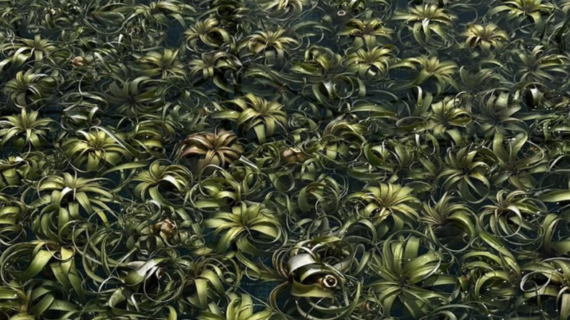
Tillandsias, also known as air plants, are low-maintenance and soil-free wonders—but that doesn’t mean they don’t need regular care. One of the biggest questions plant lovers have is: how exactly do you water an air plant?
Because air plants absorb moisture through their leaves (not their roots), their watering needs are unique. Here’s everything you need to know about how, when, and how often to water your air plant to keep it healthy and thriving.
Why Watering Air Plants Matters
Unlike traditional houseplants that soak up water through their roots in soil, Tillandsias use their leaves to absorb moisture directly from the air or from water during misting or soaking.
Their fuzzy coating—called trichomes—helps them catch water and nutrients. That’s why watering is crucial to their survival, especially if you’re growing them indoors where humidity is often lower than in their natural environment.
The 3 Main Ways to Water an Air Plant

1. Soaking (Best Method for Most Air Plants)
Soaking is the most thorough and effective way to hydrate your air plant.
How to soak:
Fill a bowl with room-temperature water.
Submerge your air plant fully for 20–30 minutes.
Gently shake off any excess water.
Let the plant dry completely upside down in a well-ventilated area for a few hours.
✅ Ideal for: Weekly or biweekly hydration, especially in dry climates or for larger plants like Tillandsia xerographica.
2. Misting (Supplemental Care)
Misting can be a helpful way to add moisture between soakings, especially if your environment is particularly dry.
How to mist:
Use a spray bottle with clean, non-chlorinated water.
Lightly mist your air plant until the leaves are evenly coated (but not dripping).
Mist 2–3 times per week if not soaking regularly.
⚠️ Misting alone isn’t enough long-term for most species—use it as a supplement, not a replacement.
3. Dunking (Quick & Handy)
A faster version of soaking, dunking is great for mounted or hard-to-remove air plants.
How to dunk:
Briefly dip the plant in water a few times.
Shake off excess moisture.
Allow it to dry thoroughly.
✅ Perfect for small species like Tillandsia ionantha or plants displayed in terrariums or arrangements.
🌦️ How Often Should You Water Your Air Plant?
The answer depends on your environment! Here’s a general guideline:
| Environment | Watering Frequency |
|---|---|
| Dry / Heated Home | 2–3 times per week |
| Average Humidity Home | 1–2 times per week |
| High Humidity Areas | Once a week or less |
🚫 Avoid These Common Watering Mistakes
❌ Leaving water in the base of the plant – This can cause rot, especially in bulbous species like Tillandsia bulbosa. Always let your plant dry completely.
❌ Using chlorinated or softened water – These can harm your plant. Use filtered, rain, or spring water if possible.
❌ Overwatering or soaking too long – While hydration is key, air plants don’t like to stay wet for too long. Overwatering = rot.